Your cart is currently empty!
Blog
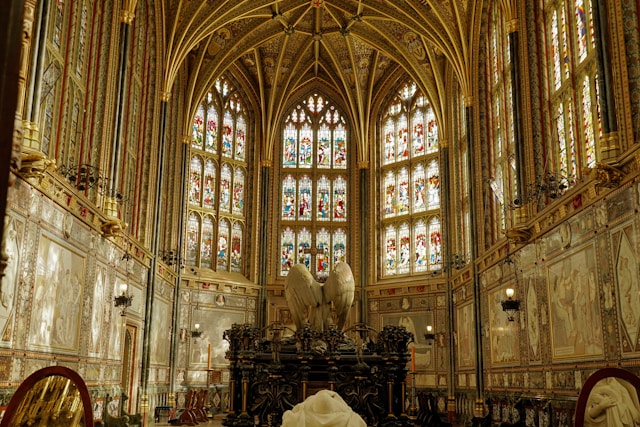
Discover the Historic and Architectural Gem: St. Andrews Church
A Place of Worship, History, and Architectural Splendor
Nestled amidst the vibrant streets of [city name], St. Andrews Church stands as a testament to the rich history and architectural heritage of the region. With its awe-inspiring medieval architecture, intricate stained-glass windows, and profound religious significance, this iconic landmark has captivated the hearts and minds of visitors for centuries.
Exploring the History of St. Andrews Church
The origins of St. Andrews Church can be traced back to the 12th century when a small Norman chapel occupied the site. Over the subsequent centuries, the church underwent several expansions and renovations, reflecting the changing needs of the congregation and the architectural styles prevalent at the time.
Norman Origins (12th Century)
The earliest incarnation of St. Andrews Church was a modest Norman chapel, built in the 12th century. This simple structure featured a nave and chancel, with thick stone walls and narrow, round-arched windows.
Gothic Expansion (13th-15th Centuries)
During the 13th and 15th centuries, the church underwent significant expansion in the Gothic style. The nave was extended, and the chancel was rebuilt with a larger and more elaborate east window. The addition of ribbed vaulting, pointed arches, and flying buttresses transformed the interior into a soaring and light-filled space.
Victorian Restoration (19th Century)
In the 19th century, the church underwent a major restoration under the leadership of architect George Gilbert Scott. Scott’s work included rebuilding the tower and spire, adding a new organ, and restoring the stained-glass windows. The Victorian restoration brought the church to its present-day appearance.
Architectural Highlights of St. Andrews Church
St. Andrews Church boasts an impressive array of architectural features that showcase the diversity of styles and techniques employed throughout its history.
Nave and Chancel
The nave, the main body of the church, is a vast and awe-inspiring space. The high ceilings, supported by ribbed vaulting, create a sense of grandeur. The chancel, located at the eastern end of the nave, is smaller and more intimate, featuring a large east window filled with vibrant stained glass.
Tower and Spire
The tower and spire of St. Andrews Church dominate the skyline of the city. The tower, built in the 15th century, is a square structure with a corbelled parapet. The spire, added in the 19th century, is an octagonal structure with a weathercock atop.
Stained-Glass Windows
St. Andrews Church is renowned for its magnificent stained-glass windows, which flood the interior with colorful light. The windows depict biblical scenes, historical figures, and intricate geometric patterns. Some of the most notable windows include the west window, which depicts the life of Christ, and the east window, which features a stunning representation of the Resurrection.
Religious Significance of St. Andrews Church
Beyond its architectural splendor, St. Andrews Church holds great religious significance for the local community and beyond.
Parish Church
St. Andrews Church serves as the parish church for the Anglican community of [city name]. It is a vibrant and active congregation that offers a range of services and activities throughout the week.
Pilgrimage Site
St. Andrews Church is believed to have been visited by St. Ninian, a 5th-century missionary who brought Christianity to Scotland. As a result, the church has become a pilgrimage site for Christians seeking to connect with their faith.
Community Hub
St. Andrews Church is more than just a place of worship. It is a vital community hub, hosting a variety of events and activities for people of all ages. These include concerts, exhibitions, and educational programs.
Tips for Visiting St. Andrews Church
* **Plan your visit during an open hour:** The church is typically open to visitors during specific hours, which may vary depending on the time of year. Check the church’s website for the most up-to-date information.
* **Attend a service:** Attending a service is a wonderful way to experience the spiritual and communal atmosphere of St. Andrews Church. Services are held regularly throughout the week.
* **Take a guided tour:** Guided tours are available by appointment and provide an in-depth look at the church’s history, architecture, and religious significance.
* **Explore the surroundings:** St. Andrews Church is surrounded by a beautiful churchyard and garden, perfect for a peaceful stroll or picnic.
* **Respect the sanctity of the church:** When visiting St. Andrews Church, be mindful of its religious significance and behave respectfully.Conclusion
St. Andrews Church is a multifaceted masterpiece that embodies the rich history, architectural brilliance, and spiritual essence of [city name]. Its imposing architecture, stunning stained-glass windows, and profound religious significance make it a must-visit destination for anyone interested in history, architecture, or spirituality. Whether you are seeking a place of worship, a sanctuary for reflection, or simply an appreciation for the beauty of the past, St. Andrews Church is sure to leave a lasting impression on your heart and mind.
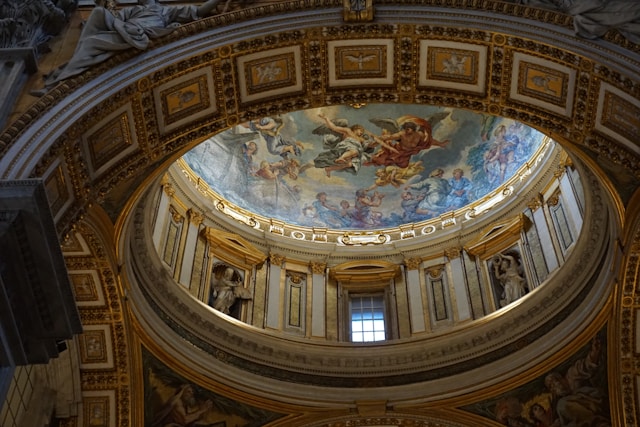
Deacons: A Guiding Force in the Christian Community
Introduction
Deacons play a vital role in the Christian community, serving as assistants to pastors and elders. They are instrumental in providing support, leadership, and care to the congregation. This comprehensive guide explores the role of deacons, emphasizing their responsibilities, qualifications, and impact on church life.
Responsibilities of Deacons
Serving the Needs of the Congregation
- Assisting with practical tasks, such as ushering, greeting, and managing finances
- Providing pastoral care and counseling to members in need
- Visiting and supporting the elderly, sick, and homebound
Assisting Ministries and Programs
- Participating in outreach programs and community service projects
- Supporting youth, children, and adult ministries
- Managing church facilities and equipment
Supporting the Leadership
- Providing administrative assistance to pastors and elders
- Participating in decision-making processes and offering advice
- Acting as liaisons between the congregation and the leadership
Qualifications for Deacons
Character Requirements
- Being a faithful follower of Jesus Christ
- Possessing integrity, humility, and a compassionate heart
- Demonstrating a commitment to serving others
Biblical Qualifications (as outlined in 1 Timothy 3:8-13)
- Respectable and of good repute
- Not double-tongued or addicted to wine
- Not greedy for money
- Managing their household well and having children who are obedient
- Not a recent convert to the faith
How Deacons Are Appointed
The process of appointing deacons varies across denominations and traditions. Some common methods include:
- Congregational nomination and election
- Appointment by the pastor or elders
- A combination of nomination and appointment
Impact of Deacons on Church Life
Strengthening the Congregation
Deacons enhance the church community by providing support and care to members, fostering a sense of belonging and unity.
Freeing Up Pastors and Elders
By assisting with administrative and practical tasks, deacons enable pastors and elders to focus on their primary responsibilities of preaching, teaching, and pastoral care.
Extending the Church’s Reach
Through their involvement in outreach and community service, deacons help the church to engage with the broader community and fulfill its mission of serving others.
Tips for Effective Deaconry
- Collaborate closely with pastors and elders.
- Establish clear roles and responsibilities for each deacon.
- Provide ongoing training and support for deacons.
- Foster a culture of servant leadership and humility among deacons.
- Encourage deacons to build relationships with members and the community.
Conclusion
Deacons are indispensable members of the Christian community. They serve as a vital bridge between the congregation and the leadership, providing support, care, and assistance. By fulfilling their responsibilities with faithfulness and humility, deacons empower the church to fulfill its mission of serving God and the community.
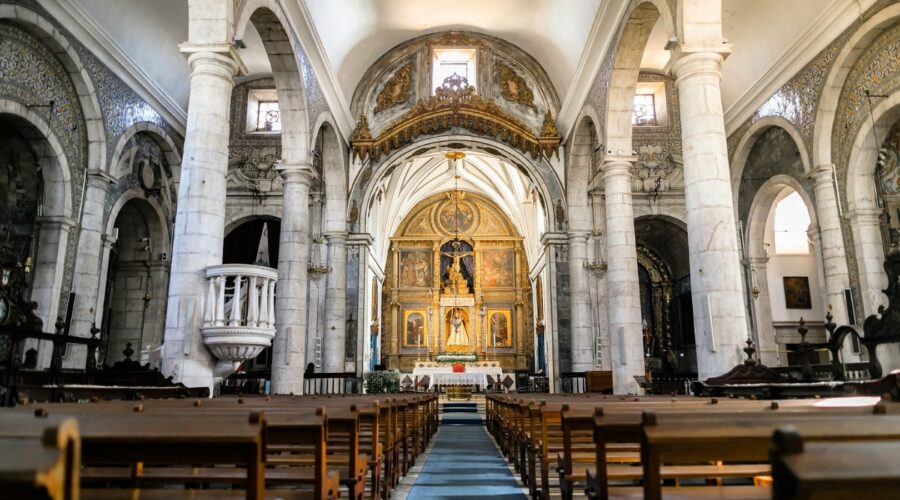
Maranatha Baptist Church: A Comprehensive Guide
Maranatha Baptist Church, established in 1962, is a vibrant and growing church located in the heart of the community. Known for its strong emphasis on biblical teaching and discipleship, the church has a rich history and a passion for reaching out to those in need. This blog post will delve into the various aspects of Maranatha Baptist Church, providing a comprehensive guide for those interested in learning more about its mission, beliefs, and programs.
Mission and Beliefs
Maranatha Baptist Church’s mission is to glorify God by making disciples of Jesus Christ who are committed to living out their faith in every area of their lives. The church holds to the core beliefs of evangelical Christianity, including the following:
- The Bible is the inspired and infallible Word of God.
- Jesus Christ is the Son of God and the only way to salvation.
- Salvation is by grace alone through faith in Jesus Christ.
- The church is the body of Christ and is called to be a witness to the world.
- The Great Commission is a commandment from Jesus Christ to share the gospel with all nations.
Ministries and Programs
Maranatha Baptist Church offers a wide range of ministries and programs that cater to individuals of all ages and backgrounds. These include:
Children’s Ministry
- Nursery for infants and toddlers
- Sunday School classes for children ages 3-12
- Vacation Bible School during the summer
- Special events and activities throughout the year
Youth Ministry
- Sunday School classes for teenagers
- Youth group meetings on Wednesday evenings
- Mission trips and retreats
- Leadership and discipleship opportunities
Adult Ministries
- Sunday School classes for adults of all ages
- Small group Bible studies
- Men’s and women’s ministries
- Mission teams and outreach programs
Worship and Music
- Traditional worship services on Sundays
- Contemporary worship services on Sundays
- Choir, orchestra, and other music ensembles
- Special music presentations and events
Outreach and Missions
Maranatha Baptist Church is committed to reaching out to those in need both locally and globally. The church supports a variety of outreach programs, including:
- Food pantry for those in need
- Clothing closet for those in need
- Community meals and events
- Mission trips to other countries
- Support for local ministries and organizations
Leadership and Staff
Maranatha Baptist Church is led by a team of dedicated pastors and staff members. The senior pastor, Dr. David Jones, has been serving the church for over 25 years. The staff includes associate pastors, youth pastors, children’s pastors, and administrative staff.
Contact Information
For more information about Maranatha Baptist Church, please visit the church’s website at www.maranatha.org.
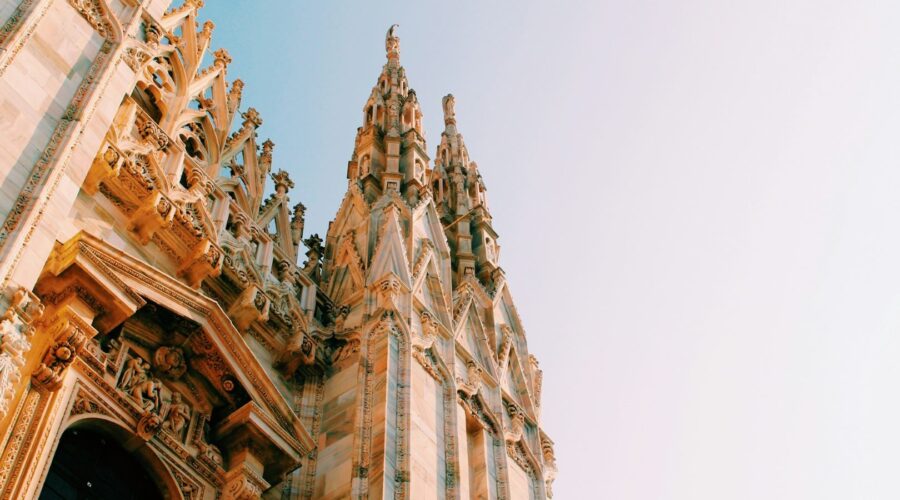
St. John the Baptist: A Prophet in the Wilderness
Introduction
St. John the Baptist, the son of Zechariah and Elizabeth, was a prominent figure in the New Testament who played a pivotal role in preparing the way for the Messiah, Jesus Christ. As a prophet and a forerunner, he preached a message of repentance and baptism, and his teachings and actions left an indelible mark on the history of Christianity.
Early Life
John was born in a priestly family in the hill country of Judea. His father, Zechariah, was a priest in the temple in Jerusalem, while his mother, Elizabeth, was a relative of Mary, the mother of Jesus. According to the Gospel of Luke, John’s birth was foretold by the angel Gabriel to his father, who had become mute after doubting the angel’s words.
Preaching in the Wilderness
Around the year 27 AD, John emerged from obscurity and began his public ministry in the wilderness of Judea. He preached a powerful message of repentance, urging people to turn away from their sins and prepare for the coming of the Messiah. His teachings resonated with the masses, and he quickly gathered a large following.
John’s primary ritual was baptism. He baptized people in the Jordan River, symbolizing the cleansing of sin and the beginning of a new life. His baptism was not merely a physical act but also a spiritual one, signifying a commitment to follow God’s will.
Encounter with Jesus
In the spring of 28 AD, Jesus came from Nazareth to be baptized by John in the Jordan River. John initially hesitated, recognizing Jesus’s superior nature, but Jesus insisted. As Jesus emerged from the water, the heavens opened, and the Holy Spirit descended upon him in the form of a dove. A voice from heaven proclaimed, “This is my beloved Son, with whom I am well pleased.”
After baptizing Jesus, John recognized him as the long-awaited Messiah. He announced to his followers, “Behold, the Lamb of God, who takes away the sin of the world!” (John 1:29)
Imprisonment and Execution
John’s outspoken criticism of Herod Antipas, the ruler of Galilee, eventually led to his imprisonment. Herod had married Herodias, his brother Philip’s wife, which was considered an unlawful union by Jewish law. John publicly condemned this marriage, which angered Herodias.
While in prison, John sent messengers to Jesus, asking if he was truly the Messiah. Jesus responded by highlighting the miraculous signs that accompanied his ministry, confirming his divine authority.
During a celebration of Herod’s birthday, Salome, Herodias’s daughter, danced and pleased the king. As a reward, she requested the head of John the Baptist on a platter. Herod, unwilling to break his oath, reluctantly granted her wish.
Legacy
St. John the Baptist’s legacy is profound and enduring. He was a pivotal figure in the history of Christianity, preparing the way for Jesus Christ and paving the path for the spread of the Gospel. His message of repentance and baptism continues to resonate with believers today.
- He is recognized as a prophet by Jews, Christians, and Muslims.
- The Eastern Orthodox Church considers him one of the most important saints.
- His feast day is celebrated on June 24th in the Western tradition and January 7th in the Eastern tradition.
Table of Notable Events in the Life of St. John the Baptist
Event Year Birth c. 6-4 BC Preaching in the Wilderness c. 27 AD Baptism of Jesus c. 28 AD Imprisonment c. 29-30 AD Execution c. 30 AD Tips for Living by the Teachings of St. John the Baptist
- Practice regular self-examination and repentance.
- Be willing to turn away from sin and follow God’s will.
- Recognize the importance of spiritual purification and cleansing.
- Prepare for the coming of the Messiah in your own life.
- Proclaim the good news of God’s love and forgiveness to others.
Links to Additional Resources
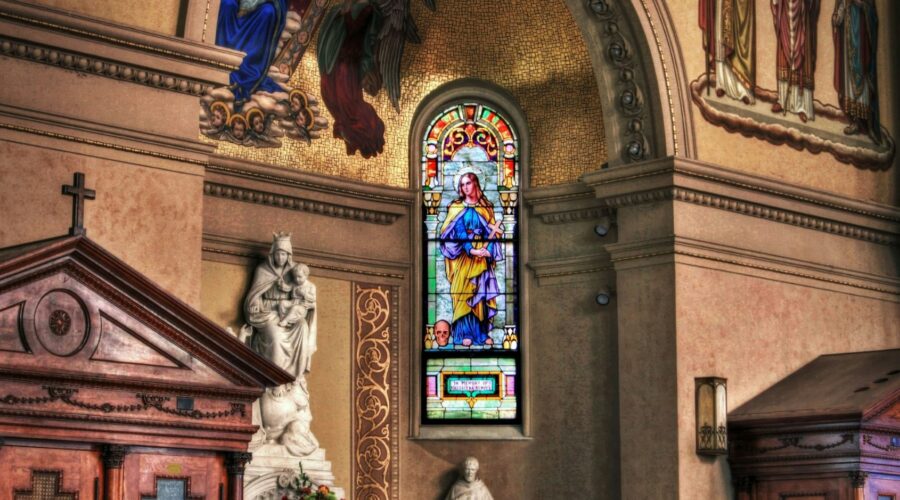
Non-Denominational Christianity: A Comprehensive Guide
What is Non-Denominational Christianity?
Non-denominational Christianity refers to Christian churches and organizations that are not affiliated with any specific Christian denomination. Unlike denominational churches, which adhere to a particular set of beliefs, doctrines, and practices, non-denominational churches are typically independent and self-governing, with greater flexibility in their theological interpretations and worship styles.
Key Characteristics of Non-Denominational Christianity
1. Independent Governance:
Non-denominational churches operate autonomously, free from the control or oversight of a central governing body or denomination. They make their own decisions regarding doctrine, worship, and leadership.
2. Flexibility in Beliefs and Practices:
Non-denominational churches often emphasize the importance of personal interpretation of scripture and spiritual experiences. They may hold a range of beliefs and practices that may not align with traditional denominational doctrines or traditions.
3. Emphasis on Christian Unity:
Non-denominational churches often prioritize Christian unity over denominational differences. They seek to bring together believers from diverse backgrounds and perspectives, focusing on shared core values and the essential teachings of the Bible.
4. Lay Leadership and Participation:
Non-denominational churches often encourage active participation from all members, including lay leaders who may serve in multiple roles. They value the contributions and insights of all believers in shaping the church’s direction and ministry.
Benefits of Attending a Non-Denominational Church
1. Greater Flexibility and Personalization:
Non-denominational churches offer flexibility in worship styles, belief interpretations, and ministry approaches. This allows individuals to find a community that aligns with their personal beliefs and preferences.
2. Inclusive and Welcoming Environments:
Non-denominational churches strive to create welcoming and inclusive environments where all are accepted and respected, regardless of their background or beliefs.
3. Opportunities for Leadership and Growth:
Non-denominational churches often provide opportunities for members to get involved in leadership roles and ministries. This can foster spiritual growth and provide valuable experiences.
4. Community and Support:
Non-denominational churches often foster a strong sense of community and support among their members. They provide opportunities for fellowship, spiritual guidance, and practical assistance.
Challenges of Attending a Non-Denominational Church
1. Lack of Historical or Denominational Affiliation:
Non-denominational churches may not have the same level of historical or denominational affiliation as traditional churches. This can make it challenging for individuals looking for a church with a specific theological heritage.
2. Potential for Doctrinal Drift:
Without a central governing body, non-denominational churches may be more susceptible to doctrinal drift over time. This can lead to changes in beliefs and practices that may not align with the original vision and mission of the church.
3. Lack of Accountability and Oversight:
Non-denominational churches are not subject to the same level of accountability and oversight as denominational churches. This can raise concerns about governance, transparency, and the handling of controversies.
Choosing a Non-Denominational Church
Tips for Choosing a Non-Denominational Church:
- Visit different churches and attend services to experience their worship styles and teachings firsthand.
- Ask about the church’s beliefs, doctrines, and practices to ensure they align with your own.
- Consider the church’s community involvement and outreach programs to assess its commitment to serving others.
- Seek out churches with experienced and qualified leadership and a strong commitment to biblical teaching.
- Pray for guidance and ask for recommendations from trusted friends or family who may have experience with non-denominational churches.
Conclusion
Non-denominational Christianity offers a unique approach to Christian worship and community. While it presents certain challenges, it also provides benefits such as greater flexibility, inclusivity, and opportunities for personal growth and leadership. By carefully considering the key characteristics and potential challenges, individuals can make an informed decision about whether attending a non-denominational church is the right choice for their spiritual journey.
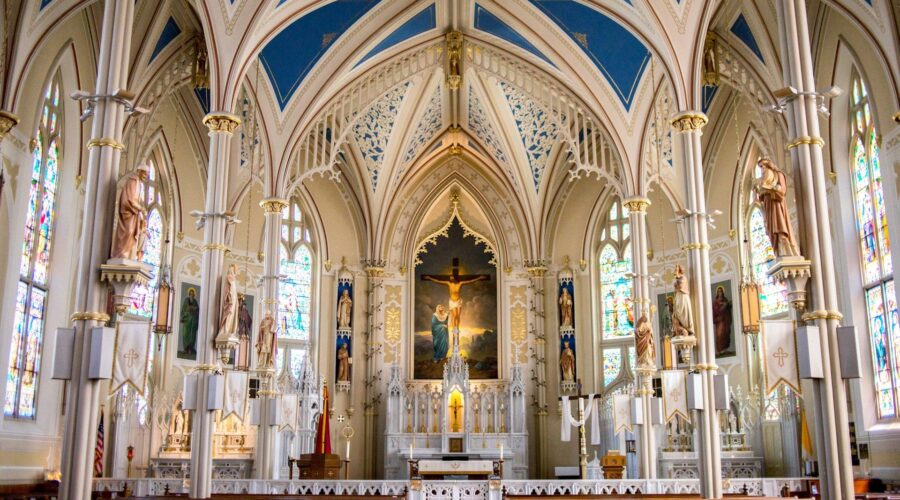
St Mark’s Church: A Historical, Architectural, and Spiritual Haven in Venice
Introduction
Standing majestically in the heart of Venice’s Piazza San Marco, St Mark’s Church is an architectural masterpiece that has captured the imagination of pilgrims, travelers, and art enthusiasts alike for centuries. Its intricate mosaics, opulent interiors, and significant historical significance make it a must-visit destination for anyone exploring the rich cultural heritage of the Floating City.
Historical Significance
Origins and Construction
The origins of St Mark’s Church date back to the 9th century, when it served as the chapel for the Doge’s Palace. The present-day basilica was constructed in the 11th century, following a fire that destroyed the original structure. The construction of the current church spanned several centuries, with various additions and modifications being made over time.
Patron Saint and Relics
St Mark is the patron saint of Venice, and his supposed relics are housed within the church. According to legend, the remains of St Mark were brought to Venice by Venetian merchants in 828 AD, and the church was built to enshrine them. The presence of St Mark’s relics has significantly contributed to the church’s religious importance and has attracted pilgrims from far and wide.
Architectural Splendor
Byzantine Influences
St Mark’s Church is renowned for its exquisite Byzantine architecture, which blends Eastern and Western elements. The church’s design features a cruciform plan with a central dome, supported by four smaller domes at the corners. The exterior is adorned with intricate carvings, mosaics, and marble inlays.
The Facade
The church’s facade is a testament to its architectural opulence. It features five graceful domes, each adorned with shimmering gold tiles. The central portal is framed by rows of slender columns, and the upper sections are adorned with delicate carvings and mosaics depicting scenes from the life of Christ.
Mosaics and Interior
Inside, St Mark’s Church is an explosion of gold and color. The walls and ceilings are covered in over 8,000 square meters of stunning mosaics, depicting biblical stories, saints, and historical events. The apse is dominated by a majestic mosaic of Christ Pantocrator (the all-powerful). The interior is further adorned with marble columns, gold leaf, and intricate carvings.
Spiritual Significance
Pilgrimage and Religious Center
St Mark’s Church has long been an important pilgrimage site for Christians from all over the world. It is believed that the relics of St Mark possess healing powers, and pilgrims have traveled to the church for centuries to seek his intercession.
Liturgical Center
St Mark’s Church serves as the cathedral of the Patriarch of Venice and is the center of the Catholic Archdiocese of Venice. Important religious ceremonies and celebrations are held in the church throughout the year, attracting both parishioners and tourists alike.
Visiting St Mark’s Church
Practical Information
* Location: Piazza San Marco, Venice, Italy
* Opening Hours: Monday-Friday: 9:30 AM – 5:00 PM; Saturday: 9:30 AM – 4:30 PM
* Admission Fees: Vary depending on the season; check official website for details.
* Dress Code: Modest attire is recommended, covering shoulders and knees.Tips for Visiting
* Book Ahead: To avoid long queues, it is advisable to book your visit online in advance, especially during peak season.
* Guided Tours: Consider booking a guided tour to gain in-depth insights into the church’s history and architecture.
* Dress Appropriately: Respect the church’s sacred nature and dress modestly.
* Be Aware of Crowds: St Mark’s Church is a popular tourist destination, so be prepared for crowds.
* Take Your Time: Allow ample time to explore the church’s interior and soak in its beauty.Conclusion
St Mark’s Church is a living testament to Venice’s rich history, architectural grandeur, and spiritual significance. Its exquisite mosaics, opulent interiors, and sacred relics continue to inspire awe and wonder in visitors from far and wide. Whether you are a devout pilgrim, an art enthusiast, or simply a traveler seeking to delve into the heart of Venice, St Mark’s Church is an unmissable destination that will leave an unforgettable mark on your memory.
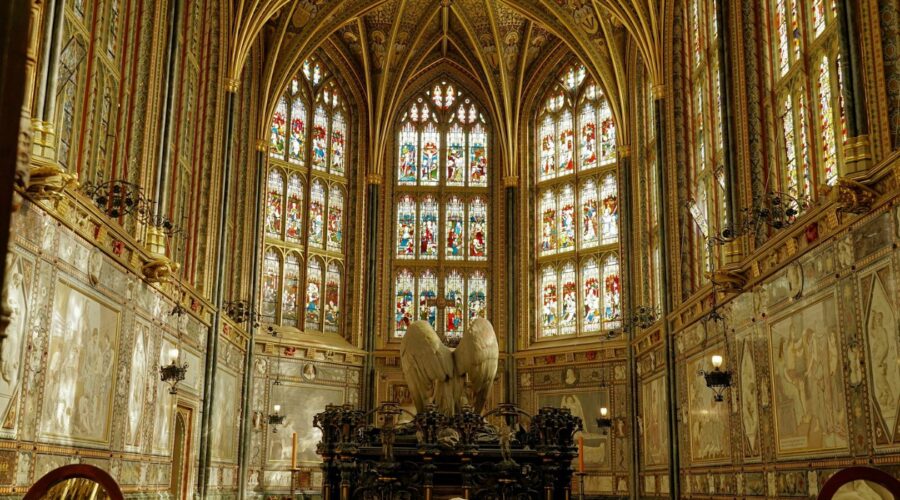
Discover the Enchanting World of St. Philips: A Comprehensive Guide
Introduction
St. Philips, a vibrant neighborhood in Bristol, England, is a hidden gem with captivating history, stunning architecture, and a lively dining scene. Whether you’re a local resident, a tourist, or an aspiring homeowner, this comprehensive guide will provide you with an in-depth exploration of all that St. Philips has to offer.
Historical Significance
Arnos Vale Cemetery
Nestled within St. Philips, Arnos Vale Cemetery is a poignant reminder of the area’s rich past. Established in 1839, this Victorian cemetery boasts intricate memorials, grand mausoleums, and a tranquil atmosphere that invites contemplation.
St. Philip’s Church
St. Philip’s Church, built in 1174, is the oldest standing church in Bristol. Its Gothic architecture, fascinating medieval stained-glass windows, and historic churchyard evoke centuries of faith and community.
Architectural Marvels
Georgian and Victorian Houses
St. Philips is renowned for its charming Georgian and Victorian terraced houses. These elegant properties feature intricate details, colorful facades, and spacious interiors that exude a sense of bygone eras.
St. Agnes Park
This picturesque park is a green oasis amidst the urban landscape. Surrounded by imposing Victorian villas, St. Agnes Park offers serene gardens, a playground, and a bandstand for summer concerts.
Vibrant Dining Scene
St. Philips is a culinary haven with a diverse range of cuisines and dining experiences.
Independent Restaurants
From authentic Italian trattorias to cozy gastropubs, St. Philips is home to a plethora of independent restaurants offering fresh, locally sourced dishes.
Greggs Factory Outlet
For those seeking a sweet treat, the Greggs Factory Outlet is a paradise of pastries, cakes, and freshly baked goods at irresistible prices.
Community Spirit
St. Philips is a close-knit community with a strong sense of belonging. Residents actively participate in local events, festivals, and volunteer initiatives that foster a welcoming atmosphere.
St. Philip’s Community Centre
The St. Philip’s Community Centre serves as a hub for local activities, offering classes, workshops, and social events that cater to all ages.
Practical Information
Getting There
St. Philips is easily accessible by bus or taxi, with regular services connecting to the city center and surrounding areas.
Accommodation
For visitors seeking overnight accommodation, there are several comfortable guesthouses and bed and breakfasts within St. Philips.
Cost of Living
Compared to other areas of Bristol, St. Philips offers relatively affordable housing and living costs, making it an attractive option for families and young professionals.
Conclusion
St. Philips is a fascinating and dynamic neighborhood that seamlessly blends historic charm with modern amenities. Its captivating architecture, vibrant dining scene, and strong community spirit make it a truly special place to live, work, or visit. Whether you’re a history buff, an architectural enthusiast, or simply seeking a welcoming and fulfilling community, St. Philips is sure to captivate your heart.
Useful Links
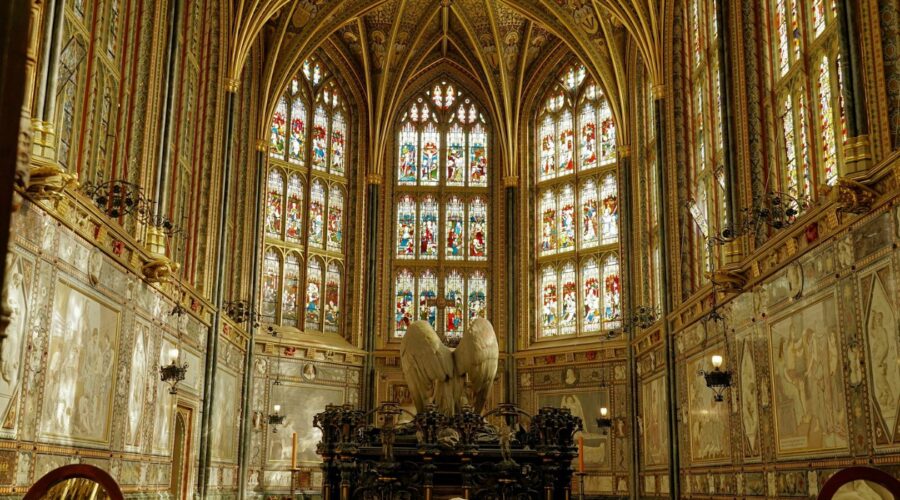
Sanctuary Churches: A Guide to Safe Havens for Immigrants
Introduction
Sanctuary churches are religious institutions that offer refuge and protection to undocumented immigrants who fear deportation. These churches provide various forms of assistance, including shelter, food, legal representation, and emotional support.
The sanctuary movement emerged in the 1980s in response to the increasing number of Central Americans fleeing violence and persecution. Today, there are an estimated 1,000 sanctuary churches in the United States.
Why Churches Offer Sanctuary
Churches offer sanctuary for several reasons:
• **Religious beliefs:** Many churches believe that providing refuge to those in need is a fundamental moral obligation. They believe that all people, regardless of their immigration status, deserve to be treated with dignity and respect.
•**Political concerns:** Sanctuary churches are often motivated by a desire to protest unjust immigration policies. They argue that the U.S. government’s focus on border security and deportation has resulted in the separation of families, the criminalization of immigrants, and the violation of human rights.
•**Local community concerns:** Sanctuary churches often play a vital role in supporting local immigrant communities. They provide a safe space for immigrants to access services, build community, and advocate for their rights.Types of Sanctuary Churches
There are various types of sanctuary churches:
• **Full sanctuary churches:** These churches offer protection to undocumented immigrants regardless of their circumstances.
•**Conditional sanctuary churches:** These churches offer protection to undocumented immigrants who meet certain criteria, such as being victims of violence or exploitation.
•**Associate sanctuary churches:** These churches provide limited forms of sanctuary, such as offering legal support or providing a safe space for immigrants to gather and organize.How Sanctuary Churches Operate
Sanctuary churches operate in various ways:
• **Providing physical refuge:** Sanctuary churches offer shelter to undocumented immigrants in church buildings, parsonages, or other church-owned property.
•**Legal assistance:** Sanctuary churches provide legal representation to undocumented immigrants facing deportation. They may also help immigrants apply for asylum or other forms of legal status.
•**Emotional support:** Sanctuary churches provide emotional support and counseling to undocumented immigrants who are often facing stress, anxiety, and fear.Controversies Surrounding Sanctuary Churches
Sanctuary churches have been the subject of debate and controversy:
• **Legal challenges:** Sanctuary churches have been challenged legally by the federal government, which argues that they are violating immigration laws. However, some courts have ruled in favor of sanctuary churches, arguing that they are protected by the First Amendment’s right to religious freedom.
•**Political backlash:** Sanctuary churches have faced political backlash from some politicians and law enforcement agencies who argue that they are encouraging illegal immigration. This backlash has included threats of defunding and criminal prosecution.
•**Community support:** Despite these challenges, sanctuary churches continue to receive support from many local communities who recognize the important role they play in supporting immigrant families.The Future of Sanctuary Churches
The future of sanctuary churches is uncertain. However, the movement continues to grow in response to the ongoing need for protection for undocumented immigrants. As long as there are immigrants who are fleeing violence and persecution, there will be churches that are willing to offer them refuge.
Resources for Sanctuary Churches
There are a number of resources available to sanctuary churches:
– **National Sanctuary Coalition:** https://www.sanctuarycoalition.org/
– **Church World Service:** https://cwsglobal.org/our-work/immigration
– **American Immigration Council:** https://www.americanimmigrationcouncil.org/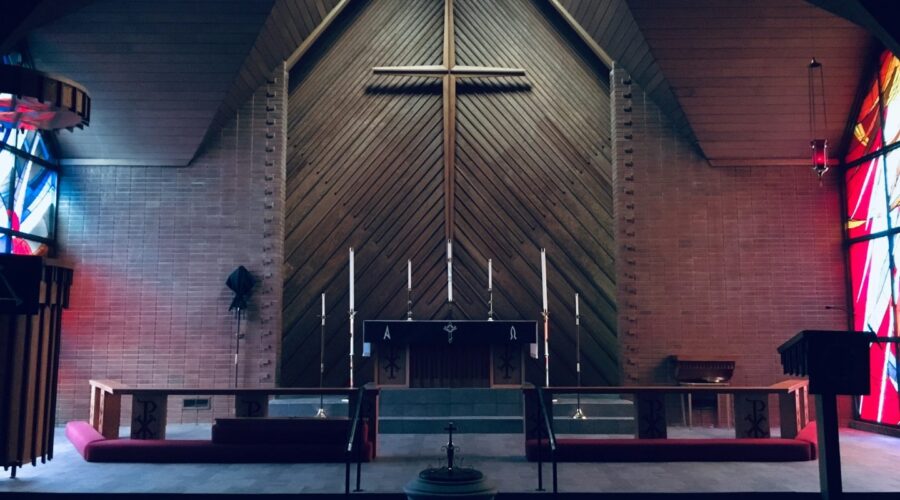
Zion Baptist Church: A Cornerstone of Faith, History, and Community
Introduction
Nestled in the heart of Philadelphia, Pennsylvania, Zion Baptist Church stands as a beacon of faith, history, and community involvement. Founded in 1809, the church has played a pivotal role in shaping the religious, social, and cultural landscape of the city and beyond. This in-depth blog post delves into the rich history, inspiring mission, and transformative impact of Zion Baptist Church, exploring its key aspects and highlighting its enduring legacy.
A Legacy of Faith and Service
Early Beginnings and Growth
Zion Baptist Church traces its origins to a small group of African American Christians who gathered for worship in 1809. The church’s first pastor, Reverend Absalom Jones, was an influential figure in the fight for religious freedom and racial equality. Under his leadership, Zion Baptist Church became a vibrant center of abolitionist activity and a safe haven for those seeking refuge from slavery.
Pastoral Leadership and Social Justice
Throughout its history, Zion Baptist Church has been blessed with a line of remarkable pastors who have dedicated their lives to serving the community. Reverend Leonard Grimes, pastor from 1848 to 1876, was a prominent advocate for education and civil rights. Reverend Matthew Anderson, who served as pastor from 1924 to 1968, was a key figure in the civil rights movement and a close confidant of Dr. Martin Luther King Jr.
A Center of Community Involvement
Educational Endeavors
Zion Baptist Church has long recognized the importance of education as a path to empowerment. In 1818, the church established the first African American school in Philadelphia, the Institute for Colored Youth. This institution provided educational opportunities for generations of young people, laying the foundation for their success and community leadership.
Community Outreach and Social Services
Beyond its educational initiatives, Zion Baptist Church has been actively involved in meeting the needs of the surrounding community. The church operates a food pantry, a clothing bank, and a health clinic, providing essential services to those in need. Its outreach programs focus on youth development, senior citizen care, and affordable housing.
A Thriving Present and a Promising Future
Modern-Day Leadership and Vision
Led by its current pastor, Reverend Dr. Leslie Callahan, Zion Baptist Church continues to thrive as a vibrant and forward-looking congregation. Dr. Callahan’s vision for the church emphasizes spiritual growth, community engagement, and global outreach. Under her leadership, the church has expanded its ministries and established partnerships with organizations around the world.
Preservation and Recognition
In recognition of its historical and cultural significance, Zion Baptist Church was designated a National Historic Landmark in 1976. The church has also received numerous awards and commendations for its ongoing contributions to the community and its unwavering commitment to social justice.
Conclusion
Zion Baptist Church stands as a testament to the transformative power of faith and the enduring spirit of a community united in purpose. From its humble beginnings as a small gathering of believers to its present-day status as a cornerstone of Philadelphia’s religious and social landscape, the church has left an indelible mark on the lives of countless individuals and the city as a whole. As Zion Baptist Church looks toward the future, it remains steadfast in its mission to serve as a beacon of hope, a catalyst for change, and a source of inspiration for generations to come.
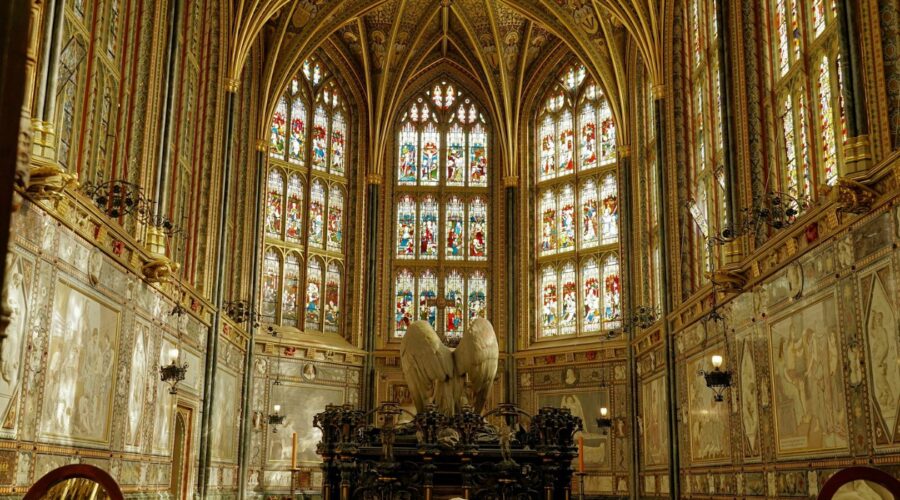
Mount Olive Baptist Church: A Pillar of Community and Faith
Introduction
Mount Olive Baptist Church, a distinguished congregation in the heart of the African American community, has been a beacon of spiritual guidance, social justice, and community outreach for over a century. With a rich history and a vibrant present, the church continues to play a transformative role in the lives of its members and the wider society.
Historical Foundations
Early Beginnings
Mount Olive Baptist Church was founded in 1887 by a small group of African Americans seeking spiritual renewal and a sense of belonging. The church’s first pastor, Reverend Moses Baker, led the congregation through its formative years, establishing a strong foundation of faith and community engagement.
Growth and Progress
During the early 20th century, Mount Olive Baptist Church experienced significant growth and prosperity. The congregation expanded its membership, established a Sunday school, and built a new sanctuary in 1912. The church became a hub for social and cultural activities, hosting community events and providing educational opportunities for its members.
Social Justice and Activism
Civil Rights Movement
Mount Olive Baptist Church played a pivotal role in the Civil Rights Movement. Reverend Dr. Martin Luther King, Jr. preached at the church several times, inspiring the congregation with his message of nonviolent resistance and social justice. The church served as a gathering place for civil rights organizers and was a site of peaceful protests and demonstrations.
Community Empowerment
Beyond the Civil Rights Movement, Mount Olive Baptist Church has continued to advocate for social justice and community empowerment. The church has established numerous programs and initiatives aimed at addressing issues such as poverty, education, health care, and housing. The church’s commitment to social justice extends beyond its own congregation, reaching out to the wider community and collaborating with other organizations.
Faith and Worship
Biblical Foundations
Mount Olive Baptist Church is a Christian congregation with a strong emphasis on the Bible as the foundation of its faith. The church’s services and teachings center around biblical principles, with a focus on the love of God, the mission of Jesus Christ, and the Holy Spirit’s guidance.
Worship and Music
Worship at Mount Olive Baptist Church is an integral part of the congregation’s spiritual experience. The church’s Sunday services feature dynamic preaching, uplifting gospel music, and heartfelt prayers. The church’s choir and other musical groups lead the congregation in praise and worship, creating a joyful and spirited atmosphere.
Community Outreach
Social Ministries
Mount Olive Baptist Church has a long history of providing social services to the community. The church operates a food pantry, a clothing closet, and a community center that offers a variety of programs and activities for people of all ages. The church also partners with local organizations to provide emergency assistance, job training, and other support services to those in need.
Youth Development
Mount Olive Baptist Church places great emphasis on youth development. The church offers a range of programs and activities for children and teenagers, including Sunday school, youth groups, and mentorship programs. The church’s goal is to provide a nurturing environment where young people can grow in their faith, develop their leadership skills, and contribute to the community.
Conclusion
Mount Olive Baptist Church is a vibrant and dynamic congregation that has made a lasting impact on the community. With a rich history and a unwavering commitment to faith, social justice, and community outreach, the church continues to be a beacon of hope and transformation for all who come through its doors. As it looks to the future, Mount Olive Baptist Church remains dedicated to serving its members and the wider community, fulfilling its mission to spread the gospel of Jesus Christ and make a positive difference in the world.
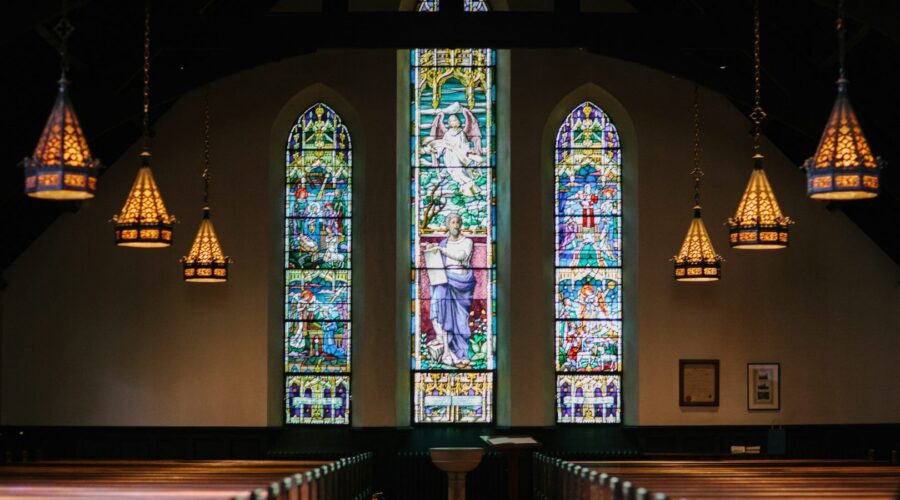
Mount Calvary Baptist Church: A Spiritual Oasis in the Heart of the Community
Mount Calvary Baptist Church, a beacon of faith and a pillar of the community, has stood proudly in the heart of Baltimore, Maryland, for over a century. This historic church, established in 1897, has witnessed countless milestones and played a pivotal role in shaping the lives of its congregants and the surrounding area.
History and Legacy
The roots of Mount Calvary Baptist Church can be traced back to a group of humble believers who gathered in a small storefront on West Hoffman Street. Under the leadership of Reverend John R. Purnell, the congregation grew rapidly, necessitating the construction of a larger sanctuary. In 1906, the church purchased its present property on Madison Avenue, where it has resided ever since.
Throughout its history, Mount Calvary Baptist Church has witnessed numerous transformations and renovations. In 1956, a new sanctuary was built, expanding the church’s capacity and providing a modern worship space. The church also established a Christian education building, offering classes and programs for all ages.
Ministries and Programs
Mount Calvary Baptist Church is an active and vibrant faith community, offering a wide range of ministries and programs to cater to the needs of its members and the surrounding community.
Worship Services
Worship services are held every Sunday at 9:30 AM and 11:45 AM. These services are dynamic and Spirit-filled, featuring uplifting music, powerful preaching, and opportunities for prayer and fellowship.
Christian Education
Mount Calvary Baptist Church places great emphasis on Christian education. The church offers a variety of classes and programs for all ages, from Sunday school for children to Bible study groups for adults. These classes provide opportunities for congregants to deepen their understanding of Scripture and their faith.
Community Outreach
The church is actively involved in community outreach, striving to make a positive difference in the lives of those around it. Mount Calvary Baptist Church operates a food pantry, providing groceries to those in need. The church also organizes clothing drives, distributes backpacks filled with school supplies, and offers free health screenings to the community.
Leadership
Mount Calvary Baptist Church is guided by a dedicated and compassionate leadership team, led by Senior Pastor Dr. Carl O. Jemison. Dr. Jemison has served as pastor of the church since 2007, and under his leadership, Mount Calvary Baptist Church has experienced significant growth and impact.
Getting Involved
If you are interested in becoming part of the Mount Calvary Baptist Church community, there are several ways to get involved:
*
Attend a Worship Service
Start by attending a Sunday worship service to experience the church’s dynamic and Spirit-filled atmosphere firsthand.
*
Join a Ministry or Program
Explore the various ministries and programs offered by the church and find one that aligns with your interests and passions.
*
Volunteer
There are numerous volunteer opportunities available at the church, allowing you to serve the community while making a meaningful contribution.
Conclusion
Mount Calvary Baptist Church is more than just a place of worship; it is a spiritual oasis and a pillar of the community. With its rich history, vibrant ministries, and dedicated leadership, the church continues to play a vital role in the lives of its congregants and the surrounding area. Whether you are seeking a place to deepen your faith, make a difference in the community, or simply find a sense of belonging, Mount Calvary Baptist Church welcomes you with open arms.
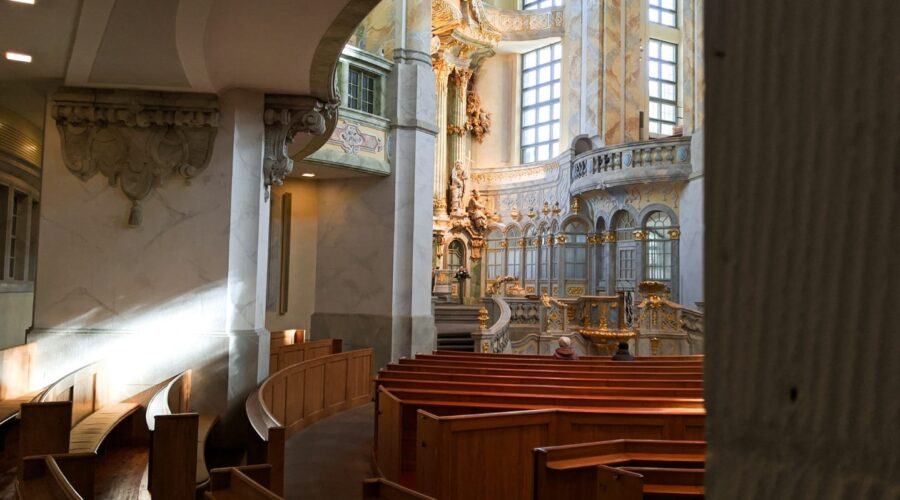
Discover the Historic and Cultural Legacy of the Church of the Epiphany
Embark on a journey through time to uncover the rich history and cultural significance of the Church of the Epiphany, a beacon of faith and artistry that has stood tall for over a century.
A Centennial of Devotion: The Founding and Early Years
The Church of the Epiphany was founded in 1913, amidst the bustling metropolis of Washington, D.C., with the mission of providing a spiritual home for the growing Episcopal community. The church’s cornerstone was laid in 1914, and its doors officially opened to worshippers in 1915.
During its early years, the church quickly became a vibrant center of religious and social life, offering a sanctuary for fellowship, worship, and community outreach. It played a vital role in supporting the local community through times of war, economic hardship, and social change.
Architectural Masterpiece: A Gothic Revival Gem
The Church of the Epiphany is renowned for its stunning Gothic Revival architecture, a testament to the skill of renowned architect Bertram Grosvenor Goodhue. Its towering spires reach towards the heavens, while its intricate stonework, stained-glass windows, and soaring vaulted ceilings evoke an atmosphere of awe and inspiration.
The church’s exterior features flying buttresses, pointed arches, and a grand rose window that depicts the Epiphany scene. The interior is equally impressive, with a spacious nave, side chapels, and an elaborate chancel with a reredos depicting the Last Supper.
A Tapestry of Art and Symbolism
Beyond its architectural splendor, the Church of the Epiphany is home to a treasure trove of art and symbolism that enriches the worship experience and reflects the church’s rich theological heritage.
Stained-Glass Windows: Illuminating the Sacred Story
The church’s stained-glass windows, meticulously crafted by renowned artisans, depict biblical scenes, saints, and symbols that illuminate the Christian faith. Each window tells a unique story, inviting viewers to contemplate the mysteries of heaven and earth.
The rose window, a central focal point, depicts the Epiphany, the manifestation of Christ to the Magi. Other windows feature scenes from the life of Christ, the apostles, and Old Testament prophets.
The Reredos: A Sacred Canvas
The reredos, located behind the altar, serves as a grand backdrop to the chancel. Created by sculptor Lee Lawrie, it features a series of intricately carved panels depicting the Last Supper, the Ascension, and other significant events in the life of Christ.
The reredos is a masterpiece of liturgical art, blending biblical narrative with symbolic imagery to convey the central themes of redemption and salvation.
Mosaics and Frescoes: Heavenly Adornment
The church is also adorned with exquisite mosaics and frescoes that enhance the spiritual ambiance. The apse mosaic, created by Hildreth Meiere, depicts the enthroned Christ surrounded by angels, while the side chapel mosaics depict scenes from the lives of saints and martyrs.
A Living Legacy: Community, Worship, and Outreach
Throughout its history, the Church of the Epiphany has been an integral part of the Washington, D.C., community, serving as a place of worship, fellowship, and outreach.
Sunday Services and Worship
The church offers a variety of Sunday services, including traditional and contemporary worship, to meet the spiritual needs of its diverse congregation. The services feature inspiring music, thought-provoking sermons, and opportunities for prayer and reflection.
Community Outreach and Social Justice
The Church of the Epiphany is deeply committed to serving the surrounding community and fostering social justice. Through its outreach programs, the church provides support to the homeless, the hungry, and those in need. It also advocates for peace, human rights, and environmental stewardship.
Educational and Cultural Programs
The church offers a wide range of educational and cultural programs for all ages, including Bible studies, lectures, workshops, and concerts. These programs provide opportunities for spiritual growth, intellectual exploration, and artistic appreciation.
A Timeless Treasure: Preservation and Restoration
Recognizing its historical and architectural significance, the Church of the Epiphany has undergone meticulous preservation and restoration efforts over the years. These efforts have preserved its original beauty and ensured its endurance for future generations.
In 1988, the church was listed on the National Register of Historic Places, further solidifying its status as a national landmark. Ongoing restoration work ensures that this architectural masterpiece continues to inspire and uplift worshippers and visitors alike.
Plan Your Visit
The Church of the Epiphany is a must-see destination for anyone interested in history, art, or spirituality. Whether you’re seeking a place of worship, a glimpse into the past, or simply an opportunity to marvel at architectural beauty, the church has something to offer everyone.
Getting There
The church is located at 1317 G Street NW, Washington, D.C., 20005. It is easily accessible by public transportation or car, with parking available nearby.
Tours and Worship Services
Guided tours of the church are available for groups or individuals by appointment. Visitors are also welcome to attend regular worship services and experience the vibrant spiritual community firsthand.
For more information on the Church of the Epiphany, its history, and upcoming events, please visit the church’s website at epiphanydc.org.
Additional Resources